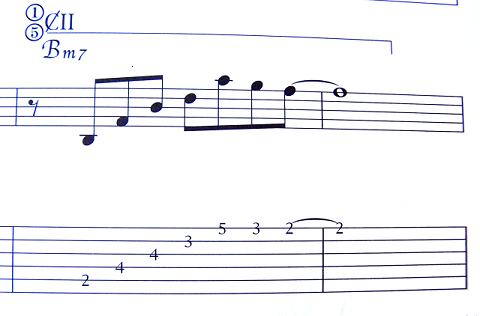|
Nemo Nint -> RE: Legato vs Staccato (Sep. 2 2007 19:26:01)
|
Thanks Ricardo, and D!
I am glad for your input, and it's definitely helpful.
One more thing though, to get more insight on the issue, I wonder if someone would comment on this particular bar in a composition I'm learning.
When the 2nd B note and the D note are played in their times, in my standard technique I would leave the 1st F note and 2nd B note ringing respectively, but as I move to strike the A, I move the little finger off the 4th string's F note and place it on the first string, and as I hit the A, I am moving the middle finger to first string for the G.
I wonder, if anyone has the patience to examine their method of playing this arpeggio and tell me if they would do what I do, or rather do something like this:
As the first F is about to be played the first B is muted, followed by the F being muted when playing the second B, and the second B being muted when hitting the D, and so on... I can practice to perform this way, but it's not my natural instinct.
I hope I made sense!

-Tom
Images are resized automatically to a maximum width of 800px
|
|
|
|

